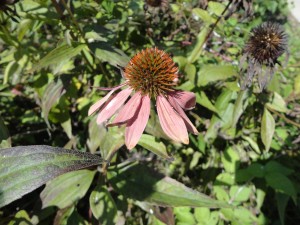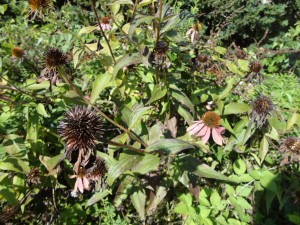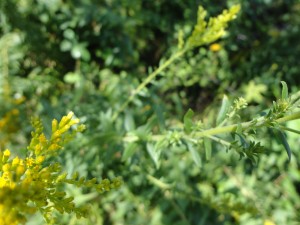All plants found on September 17, 2014 outside of the Ohio State Museum of Biological Diversity
Species name: Cichorium intybus
Common name: Chicory
Family: Asteraceae
Status: Native to Europe, but considered naturalized in the United States
Notes: This plant can produce tall flowers in open, undisturbed habitats, but is also capable of producing short flowers in areas like lawns that are regularly mowed. This plant was growing in an open mulch bed along with some other weeds including Taraxacum spp.
Species name: Echinacea purpurea
Common name: Purple Coneflower
Family: Asteraceae
Status: Native to the Lower 48 United States
Notes: This herbaceous plant only grows naturally in prairies with well drained soil, however it thrives in most conditions when planted. The pink drooping petals are unique to the flowers of this plant. The spiky “hedgehog-like” seed pods for which the genus (Echinacea) is named are also a diagnostic feature.
Species name: Solidago canadensis
Common name: Canada Goldenrod
Family: Asteraceae
Status: Native to most of North America
Notes: This plant is an early successor and is often one of the first plants to colonize scorched ground. However, it’s also one of the first plants to give way to other herbaceous plants and tree saplings during succession. This group of plants was planted in a garden with a bit of mulch.






The chicory that was photographed is really a great example of the Asteraceae family. We also saw this plant around the Herbarium today during our class field trip! The Asteraceae family is unique in that the leaves can be simple, compound or whorled. They can also be lobed and serrate, which is helpful in identifying the chicory!
I also did purple coneflower! I thought it was interesting that it displays both alternate and opposite leaves. At least that’s how it looked to me!
I really like your purple coneflower. I think the first picture of it that you provided does an excellent job of demonstrating the aggregates of multiple smaller flowers on the head inflorescence.